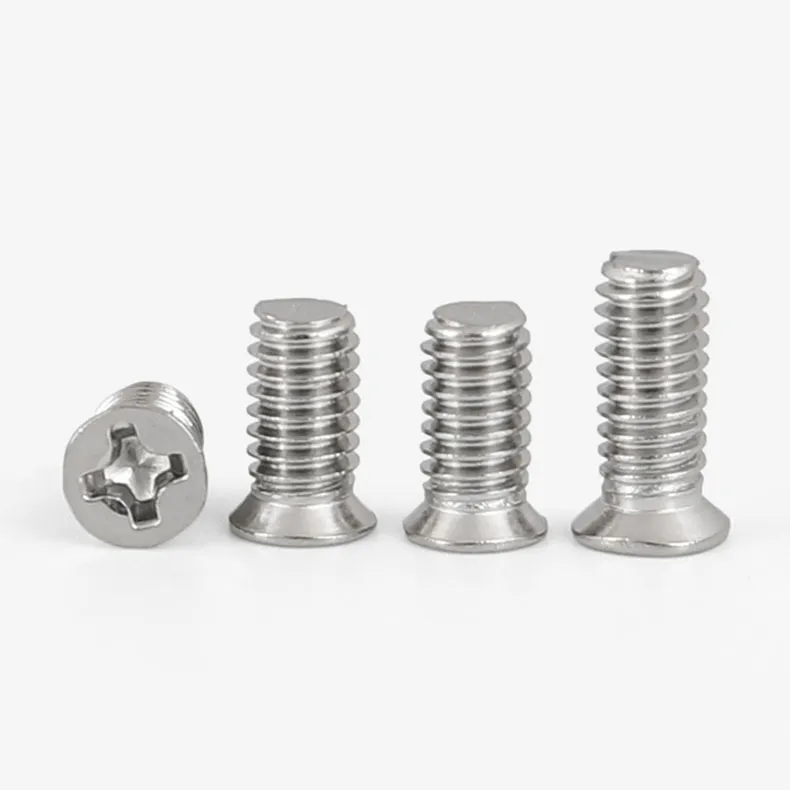

Cost Analysis of Self-Drilling Screws for Your Project Needs
Dec . 18, 2024 08:16 Back to list
Cost Analysis of Self-Drilling Screws for Your Project Needs
The Price and Value of Self-Drill Screws An In-Depth Look
Self-drill screws have become a staple in various industries, from construction to manufacturing, due to their ability to eliminate the need for pre-drilled holes. As innovation continues to shape the landscape of fasteners, understanding the pricing dynamics of self-drill screws is crucial for both buyers and sellers.
What are Self-Drill Screws?
Self-drill screws, also known as self-tapping screws, feature a drill point that allows them to create their own hole as they are driven into materials. This unique design makes them particularly useful for projects where efficiency and speed are paramount. They are commonly made from materials such as carbon steel, stainless steel, or brass, and are available in various coatings to provide corrosion resistance.
Factors Influencing the Price of Self-Drill Screws
When it comes to pricing self-drill screws, several factors come into play
1. Material Quality The type of material used in manufacturing self-drill screws significantly affects their price. High-quality stainless steel screws are generally more expensive than their carbon steel counterparts due to their enhanced strength and resistance to corrosion.
2. Coating and Finish Screws with special coatings, such as zinc plating or black oxide, can cost more due to the additional processes required during manufacturing. These coatings not only provide aesthetic appeal but also enhance performance in specific environments, adding value to the product.
3. Type and Size Self-drill screws come in various sizes and types, including ones designed for specific applications, such as roofing or sheet metal. Larger screws or those with specialized designs will typically be priced higher due to the increased material and manufacturing complexity involved.
self drill screw price

4. Supply and Demand Dynamics The general market conditions can influence prices as well. For instance, in a period of high demand for construction materials, the prices of self-drill screws may rise due to limited supply. Conversely, during economic downturns, prices may drop as demand wanes.
5. Manufacturing Location The origin of the screws can also impact their price. Domestic production often incurs higher labor and operational costs, making locally sourced screws more expensive than those imported from countries with lower production costs.
Where to Buy Self-Drill Screws
Self-drill screws can be purchased from a variety of sources. Home improvement stores typically carry a range of screws suitable for DIY projects, while industrial suppliers are ideal for bulk purchases needed for larger-scale projects. Online marketplaces also provide the convenience of comparing prices and accessing a broader selection of sizes and materials.
Evaluating Value Beyond Price
While the price of self-drill screws is important, it is essential to evaluate the overall value they provide. Investing in higher-quality screws might mean spending more upfront, but their durability and performance can lead to cost savings in the long run. For instance, screws that resist corrosion can prevent costly repairs or replacements, making them a worthwhile investment for long-term projects.
Conclusion
Understanding the pricing dynamics of self-drill screws can help consumers and businesses make informed purchasing decisions. With various factors influencing price, from material quality to market conditions, it is essential to weigh the costs against the value these screws provide. Whether you are a DIY enthusiast or a professional contractor, selecting the right self-drill screws for your projects can enhance efficiency and ensure lasting results. In an ever-evolving market, staying informed about pricing trends and product quality will ultimately lead to better outcomes in your fastening needs.
Latest news
-
High-Strength Hot Dip Galvanized Bolts - Hebei Longze | Corrosion Resistance, Customization
NewsJul.30,2025
-
Hot Dip Galvanized Bolts-Hebei Longze|Corrosion Resistance&High Strength
NewsJul.30,2025
-
High-Strength Hot-Dip Galvanized Bolts-Hebei Longze|Corrosion Resistance&High Strength
NewsJul.30,2025
-
Hot Dip Galvanized Bolts-Hebei Longze|Corrosion Resistance&High Strength
NewsJul.30,2025
-
Hot Dip Galvanized Bolts - Hebei Longze | Corrosion Resistance, High Strength
NewsJul.30,2025
-
High-Strength Hot Dip Galvanized Bolts-Hebei Longze|Corrosion Resistance, Grade 8.8
NewsJul.30,2025

